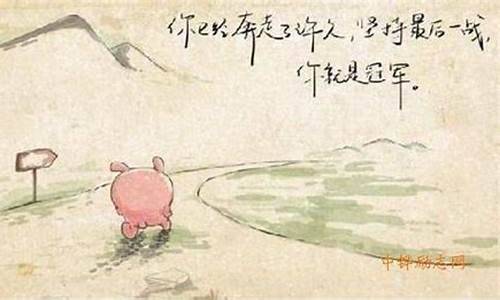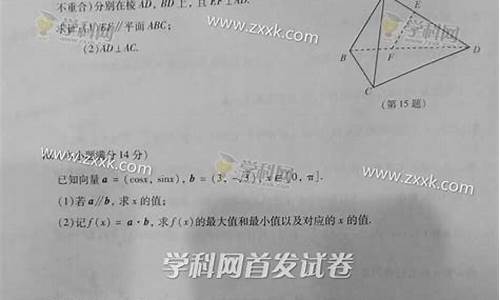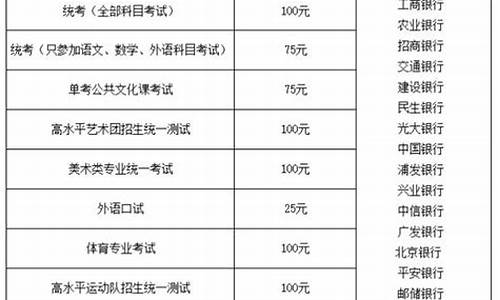您现在的位置是: 首页 > 志愿填报 志愿填报
高考英语倒装句ppt_高考英语倒装
tamoadmin 2024-06-16 人已围观
简介1.高考英语单选 倒装2.能不能简单的讲讲倒装句的用法(高考英语)3.高考英语语法:高中英语语法-“倒装”考点透析4.2019年成人高考高起点英语语法:倒装句1、选B2、考点:1)so...that和such...that结构2)倒装句3、基础知识:1)so+形容词+(a)+名词+that2)such+(a)+形容词+名词+that以下两个短语可当公式背诵:sogoodagirlsuchagood
1.高考英语单选 倒装
2.能不能简单的讲讲倒装句的用法(高考英语)
3.高考英语语法:高中英语语法-“倒装”考点透析
4.2019年成人高考高起点英语语法:倒装句

1、选B
2、考点:
1)so...that
和such...that结构
2)倒装句
3、基础知识:
1)so
+
形容词
+
(a)+
名词
+
that
2)such
+(a)+
形容词
+
名词
+
that
以下两个短语可当公式背诵:
so
good
a
girl
such
a
good
girl
其中名词和形容词可以替换
例:so
diligent
a
boy
such
a
diligent
boy
so
cold
a
day
such
a
cold
day等
3)倒装句:
指主语和谓语顺序颠倒过来,可以分为全部倒装(所有谓语都置于主语前),和部分倒装(只有谓语的助动词置于主语前)两种。
当副词so或such置于句首时,会引起主谓倒装。
4、做题思路:
根据公式,先排除C、D
根据倒装原则排除A
所以最佳答案是B
高考英语单选 倒装
在倒装句的变化规则中有这样一条: 为了强调一些跟在布吉舞动后的小副词(in/out/up/down/here/there/away/back/long),可以将它们提到句首,然后引起主语和谓语动词完全颠倒,称作完全倒装。如,In came the teacher. Here comes the bus.但主语是人称代词时,只提前副词,主谓不颠倒,如,There he goes.你问的这两句话原句是China lives long. My motherland live long.china相当于人名,当成单数对待,而motherland富有更多的含义在里面,被当成了复数使用。
倒装中还有一条:although和as都有虽然的意思,引导让步状语从句,although引导从句时从句不能倒装,而as引导的从句必须倒装,即Although he is a quiet boy, ...=Quiet boy as he is,...(
即,将从句中的表语a quiet boy提前了,但主谓不颠倒,同时应该注意,表语名次强如果有不定冠词,提到句首后应该省掉)
能不能简单的讲讲倒装句的用法(高考英语)
如果是A,词序就不对了,应该是:on a wooden box Mrs. Tailor was standing
B. 选项才是正确的倒装。
句子意思是:
看,站在一个木箱子上的是泰勒夫人,她正在伸手去收集她养的母鸡下的宝贝鸡蛋。
高考英语语法:高中英语语法-“倒装”考点透析
倒装句用法
倒装句的意义和分类:英语的基本语序是“主语+谓语”。但有些场合是“谓语+主语”。这种语法现象称为倒装。整个谓语被放在主语的前面,称为完全倒装。例如:
There goes the bell. 铃响了。
Under a big tree sat a boy reading a book.大树下坐着一个男孩在读书。
谓语的一部分(系动词、助动词或情态动词)放在主语的前面,其余的部分仍在主语之后,称为部分倒装。
例如:
Not until 10 o'clock will the library open. 直到十点种图书馆才开门。
倒装的目的:
语法结构的需要:通常疑问句、there be 结构等需要用倒装句。例如:
Was the Communist Party of China founded in 1921? 中国***是1921年成立的吗?
There stants a bridge across the river. 河上有座桥。
Where are you going? 你上哪去?
语法修饰的需要:倒装句可以起强调作用,加强语气。例如:
Still greater contributions should we make to our motherland. 我们应该对祖国作出更大的贡献。(强调宾语)
Such is the case. 情况就是这样。(强调表语)
Now comes your turn. 现在该轮到你了。(强调状语)
Up went the model plane. 那架航模飞机飞起来了。(强调状语)
倒装句结构的基本用法:
全部倒装(平衡倒装句型):
①句首是地点状语和表语时:
In front of the house sat an old man smoking a pipe. 在房屋前面坐着一位老人在抽烟斗。(句首是状语)
On wither side of the street were rows of green trees. 街道两边绿树成行。(句首是表语)
②句首有 here, there, out, in, up, down, off, away 等副词时:
Out rushed a cat from under the table. 从桌子底下窜出一只猫来。
Here is a ticket for you. 这是给你的票。
Up went the prices. 价格上涨。
③句首有 so(表肯定),neither (nor) (表否定),表示前面所说的情况也适合与另一个人或事。
He can swim. 他会游泳。
So can she. 她也会。
He did not watch TV yesterday evening. 他昨晚没看电视。
Neither did I. 我也没看。
④在there be 结构中。
There are fifty students in our class. 我班有50个学生。
⑤在某些祝愿句中。
Long live the People's Republic of China! 中华人民共和国万岁!
⑥在某些感叹句中。
How proud we are of our great motherland! 我们为伟大的祖国感到多么自豪!
部分到装(强调倒装句型)
①用于省去if 的虚拟条件句中
Were there no air or water, there would be no life in the world.如果没有水和空气,世界上就不会有生命。
②用于以as 引导的状语从句中
Rich as they are, they are not happy. 尽管他们富有,但不幸福。
③用于句首是否定意义的副词或连词时。
Seldom have I read a novel so touching as this. 我难得读到如此动人的小说。
Hardly did I think it possible. 我几乎认为这是不可能的。
④用于疑问句。
When did you begin to learn English? 你什么时候开始学英语的?
⑤句首是only 、后边跟状语的句子中
Only in this way can you learn English well. 只有这种方法,你才能学好英语。
⑥直接引语的全部或一部分在句首时。
"Do you think my clothes fit well?" asked the emperor.“你认为我的衣服非常合身吗?”皇帝问道。
"Mr smith" said mary,"May I borrow your pen?" “史密斯先生”玛丽说,“我可以借一下你的钢笔吗?”
⑦某些祝愿的句子(谓语带有情态动词,则为部分倒装)。
May you succeed. 祝您成功。
重难点分析
1.由疑问词或有疑问词修饰的名词作主语的特殊疑问句不倒装。如:
Who is your maths teacher? 谁是你的数学老师?(who 是主语)
Which bicycle is yours? 哪辆自行车是你的?(which 是定语,修饰bicycle )
2.在以 here, there, now, then… 等开头的句子中 here, there 强调地点但不指具体的地点,只用来引起人们的注意,要重读。同样 now, then 强调时间,也并不指具体时间,只引起人们的注意,也要重读。如:
There comes our teacher. 我们的老师来了。
在时态方面要注意,除了以 then 开头的句子用过去时外,其余均用一般现在时。如:
Then came a new problem. 那时出现了新问题。
3.主语是人称代词时不倒装。如: Here we are. 我们到了。(Here are we 错)
Away he went. 他走开了。(Away went he.错)
There he comes. 他来了。(There comes he. 错)
4.为了使句子生动、流畅,常把 in, out, down, up, away, off 等,副词放在句首,采用全部倒装语序,不加助动词( do, does等)句子的动词一般都是不及物的行为动词。如:
In came the manager. 经理来了。 不说 :In did the manager come. 当主语是人称代词时,一般只把副词放在句首,不倒装。例如:
In he came and the lesson began.他进来了,于是开始上课。 不说:In came he and lesson began.
5.only 放在句首,但修饰的不是状语而是主语时,不倒装。如:
Only John is allowed to enter the lab. 只有约翰被允许进入实验室。
Only the boy himself knows what he is going to be. 只有这孩子本人知道他将来的前途。
6.以so 开头的句子。如果只是重复前面一句话的意思,不倒装。如:
It was very cold yesterday.昨天很冷。
So it was.正是这样。
He did a good job. 他干的很出色。
So he did. 确实如此。
7.以 not only 开头的句子要倒装,但but also 后面的句子不倒装。如:
Not only did he speak more correctly, but also he spoke more easily. 不仅他说得更准确,而且他说得也更轻松。
8.以 not until 开头的句子主句要倒装,没有助动词时要加助动词。如:
Not until Mother came back did it stop raining. 直到妈妈回来雨才停。
9.带有否定意义的副词和状语词组放在句首时,句子要倒装,这样的副词常见的有:no sooner…than, hardly…when, not until, never, hardly, seldom, scarecely, little, barely, at no time(=never) 等。在使用时要特别注意以hardly(barely/scarcely)…when 和 no sooner…than 开头的句子。在这种倒装句中,主句倒装从句不倒装。如:
Hardly had he got into the room when the telephone rang. 他一进屋,电话就响了。
10.频度状语如 often, seldom 等,地点状语如in front of, in the middle of 等,位于句首时,句子要倒装,没有助动词时要加助动词。如:
Seldom does it snow here.这里很少下雪。
11.充当表语的单数名词放在句首时,不加任何冠词,也不用复数形式。如:
Child as he is, he knows a lot .虽然他是个孩子,可知道的事挺多。
12.为了强调某一动作或使句子平稳和谐,将表语(形容词、现在分词、过去分词)放在句首并倒装。如:
Late as it was, he still continued learning in a poor light. 虽然天色已晚,他仍继续在微弱的光线下学习。
Late as it was表示让步,是as 的一种用法,意思相当于Though it was late 。
再举一例:
Written on the box is the model of the machine. 箱子上写了机器的型号。
这个句子的正常语序是:The model of the machine is written on the box.
written 是过去分词在句中作表语。注意本句不是被动语态,而是系表结构。
2019年成人高考高起点英语语法:倒装句
《高中英语语法-“倒装”考点透析》由liuxue86.com我整理。本内容整理时间为05月12日,如有任何问题请联系我们。
?倒装?考点透析
倒装有两种情况:部分倒装(主语和助动词倒置)和全部倒装(主语和谓语完全倒置)。之所以使用倒装,一是为了句子的需要;二是为了语法结构的需要。?
一、为了句子意义的需要。
也就是为了强调句子的某一内容,并使上下文衔接紧密;或为了保持句子平衡。常见有下列情况:?
1.句子谓语是go,come,run等表示位置的动词和be动词,句中又有表示方位的副词(如the re,here,up,down,out,in,away等),为了强调该副词,可将其放于句首,而将谓语动词全部置于主语之前。如:?
Here comes the train to Beijing. 去北京的火车来了。?
There goes the bell. 铃响了。?
Down came the rain. 下雨了。?
但主语是人称代词时,主语仍置于动词之前。如:?
Away he comes. 他来了。?
Here it comes. 它来了。?
2.为了强调句中的状语或表语,为了保持句子平衡或上下文衔接紧密,可将状语或表语置于句首,句中主语和谓语完全倒装。如:?
At the front of the hall sat the headmaster.?
校长坐在大厅的前部。?
In this paragraph can be found an answer.?
在这段里能找到答案。?
3.为了强调only及其所修饰的状语(通常是副词、介词短语或从句),则将它们移到句首,句中的主谓作部分倒装。如:?
Only then did we realize that the man was blind.?
直到那时我们才发现那个人是盲人。?
Only when the war was over in 1918 was he able to get happily back to work.
直到1918年战争结束后,他才得以愉快地重返工作岗位。?
4.将含有否定意义的副词(never,seldom,not,little,hardly等)置于句首以示强调时,句中的主谓作部分倒装。如:?
Seldom in my life have I met so determined a person.
一生中我很少见到如此果断的人。?
5.为了强调?not a+名词?或?not a single+名词?结构,将其置于句首时,句中的主谓作部分倒装。如:?
Not a word did he say at the last meeting.?
在上次会议上他一句话都没说。
6. Hardly?when,no sooner?than,not only?but also引导两个分句时,将前一个分句中的主谓作部分倒装,后一个分句中的主谓语序不变。
如:?
Hardly had he began to speak when his father stopped him.
他刚开口发言就被父亲制止了。?
No sooner had I left my house than it began to rain.?
我刚刚离开家就下雨了。?
但neither/not?nor引导两个分句时,这两个分句中的主谓均要倒装。如:?
Neither do I know her address,nor does he.?
我不知道她的地址,他也不知道。?
Not could the patient eat,nor could he drink.?
那个病人既不能吃,也不能喝。?
7.在?so+形容词?that分句?结构中,如将?so+形容词?置于句首以示强调时,其后的系动词be则要移到主语前面,形成主谓的完全倒装。如:?
So moved was she that she could not say a word.?
她激动得一句话也说不出来。?
在?so+副词?that分句?结构中,如将?so+副词?置于句首以示强调时,其后的主谓作部分倒装。如:?
So loudly did he speak that even the people in the next room could hear him.
他的声音那么大,连隔壁屋子里的人都听得见。?
So fast does light travel that it is difficult for us to imagine its speed.
光速如此之快,我们很难想象。?
二、由于语法结构的需要使用倒装。常见于下列句型:?
1.?So+助动词+主语?是一种常用于对前面所说的情况作简短回答的句型。如:?
I was late and so was she.?
我迟到了,她也迟到了。?
They loveshavingslots of friends,so do those with disabilities.
他们喜欢广交朋友,残疾人也一样。?
2.?Neither/Nor+助动词+主语?是用于对前面所说的否定内容表示同样看法的句型。如:?
She won?t go. Neither/Nor will I.?
她不走,我也不。?
I cannot swim. Neither can he (swim)。?
我不会游泳,他也不会。?
3.当if引导的虚拟条件从句中含有had,were或should等时,如将if省略,则要将had,wer e或should等移到主语前,作部分或完全倒装。?
Had you come yesterday,you would have seen him.
若你昨天来,你就会见到他了。?
4.表示存在的句型?There be+主语?也属于倒装句之列。如:?
There are three chairs,a desk and a computer in the room.
搜狐教育社区 《高中英语语法-“倒装”考点透析》由liuxue86.com我整理
倒装
所谓倒装是将谓语成分放在主语前面。这类题同样要求考生熟记相应的规则。其出题方式通常是给出已经倒装的主谓语,要求考生在选项中找出与该句意思相符的否定词作句首,或给出需要倒装的否定词的句首,要求考生在选项中找出倒装的主谓语,等等。倒装句有疑问句、there be句型、表愿望的句子、感叹句等。除此之外:
l)有些连接词引导的句子需要倒装。如so,neither,nor,等等。
Jim can drive a car,so can I.
Jim会开车,我也会。
2)有些副词和连词引导的分句也需要倒装。但倒装的部分不同,需要特别记忆。如as引导的分句需将被强调的词前置到句首,即as前,但主谓语顺序不变。而however引导的分句是将被强调词放在however之后,主语之前,但主谓语顺序不变。
Try as she might,Sue couldn’t get the door open.
尽管苏费很大的劲儿尝试,门就是打不开。
I really want the car.however much it costs.
不管多贵,我就是要这辆车。
3)有些副词引导的句子,如here,there,now,then,out,in,down,up,away,等等,需要主谓语倒装。但如果主语是代词,则主谓语不倒装。
Here comes the boss.
老板来了。
Here he comes.
他来了。
Out rushed the boy,no one knew why.
男孩冲出去了,没人知道原因。
4)具有否定意义的词或短语作句首时,主谓语倒装。这些词有:hardly,seldom,rarely,little,barely,scarcely,in no time,not,never,by no means,hardly...when,no sooner...than,
not only...but also,等等。
Hardly had she sat down when the phone rang.
她刚坐下电话铃就响了。
Never had she been so confused.
她还从来没有这样困扰过。
5)Only作句首强调副词、介词短语或状语从句时主谓倒装,但强调主语时不倒装。
Only in this way Call we find him.
只有这样我们才能找到他。
Only Tom can find him.
只有Tom能找到他。
例题及说明:
例l:when he saw his wife’s face did Tom realize the true meaning of her remark.(2007)
A.Just
B.Never
C.Only
D.Usually
说明:考查only作句首强调状语从句,主句中主谓语倒装。答案:C。后半句是主句,并且从主谓语的顺序可知是个倒装句:did Tom realize。Never和only放在句首都必须主谓倒装,但never不合题意。句子大意Tom只有看着妻子的脸时,才能知道她的话的意思。
例2:Nowhere else in the worldiTlore beautiful scenery than in Switzerland.(2005)
A.you can see
B.you had seen
C.can you see
D.had you seen
说明:考查否定词放句首,主谓语倒装。答案:C。否定词起始的句子主谓语要倒装。这里表示一般性的赞美,用现在时。句子大意瑞士的风景是世界任何其他地方都不能与之媲美的。
例3:Only under special circumstances to take make-up tests.(2004)
A.are freshmen permitted
B.freshmen are permitted
C.are permitted freshmen
D.permitted are freshmen
说明:考查only作句首强调介词短语时主谓语倒装。答案:A。Under special circumstances
是介词短语。句子大意只有在特殊情况下,一年级学生才允许补考。









